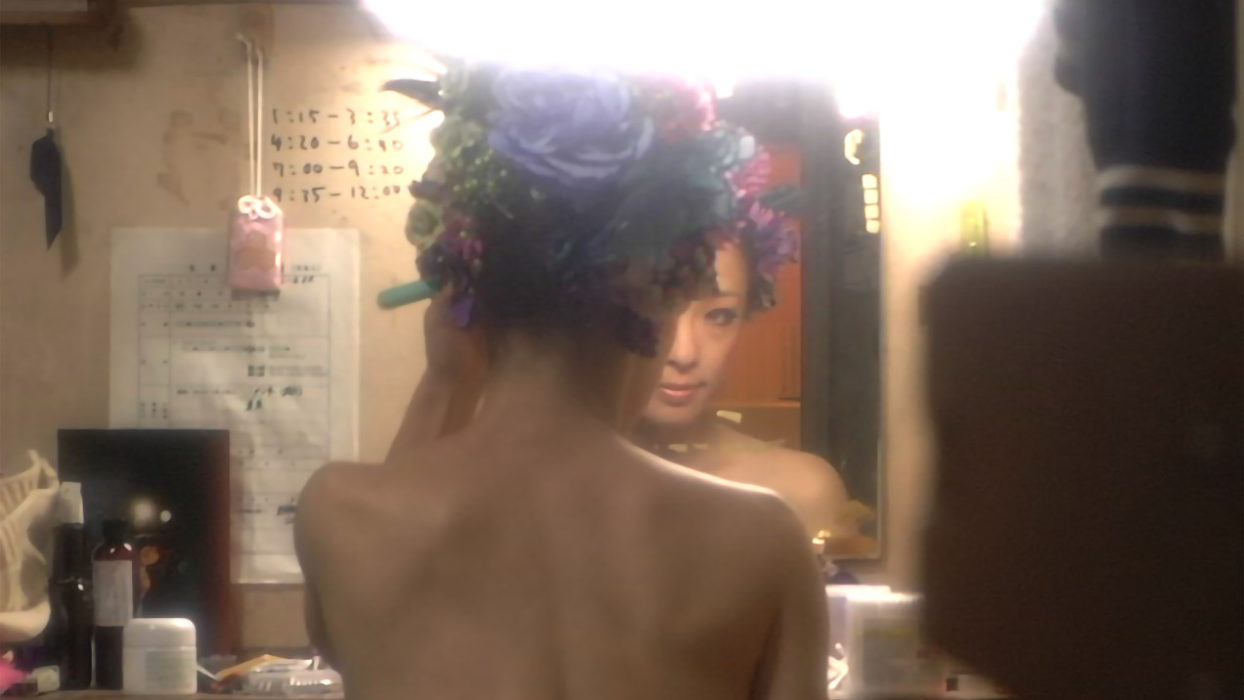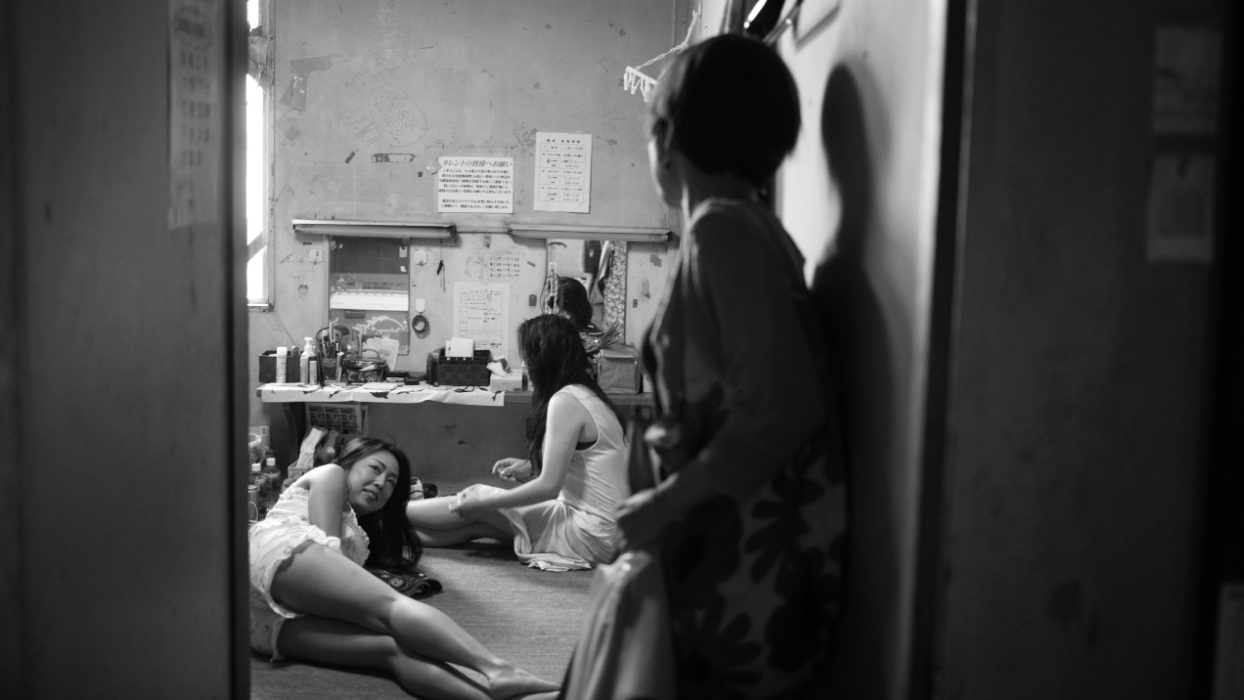Odoriko
- 2020
- Japan, United States, France
- 114 min
SCAM INTERNATIONAL AWARD
CULTURAL INTANGIBLE HERITAGE AWARD
Odoriko are dancers of the dying art of Japanese strip theater. Once a popular form of entertainment alongside standup comedy, today all but 20 strip clubs have closed nationwide. Still, the women travel solo with their costume cases from one dressing room to another.
We hear the speaker’s distant crackling voice announcing the next act with no great conviction: “The stage is this place, he says, where the snow falls in summer and the sun shines in winter.” But over here, in the changing rooms where the dancers are getting ready, the world turns the right way round, that is to say, around practical questions: shimmering costumes to be mended and slipped on in a rustle of sequins, skilful makeup in front of cluttered mirrors, news by phone from a far-off family, stretching, broken-down air-conditioning. Fiction has often touched on (in the films of Renoir, Cassavetes or Ferrara) this back-stage feminine sociability encircled by men’s gaze. The strippers here bear the age-old name odoriko, and command all the attention of Yoichiro Okutani’s discreet camera. Men exist only on the fringes, as an off-screen presence in the run-down theatres, where, in any case, their number is dwindling. For, in Japan, some twenty of these old-fashioned clubs are all that remain, welcoming under their tired neon lights the itinerant dancers who may well be the last representatives of their art. Here, from one changing room to another, their enduring professionalism is the real show, retrieved from the depths of mirrors destined to drink in their deepest secrets.
Jérôme Momcilovic
- Production : Asako Fujioka (Documentary Dream Center), Eric Nyari (Cineric Creative), Yoichiro Okutani
- Cinematography : Yoichiro Okutani
- Sound : Young-chang Hwang
- Editing : Keiko Okawa, Yoichiro Okutani


